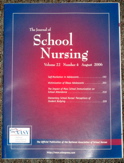Alaska Blind Child Discovery
A
cooperative, charitable research project to vision screen every preschool
Alaskan
School Nursing HOTV vs Photoscreen
Home

Background
Photoscreening may outperform routine acuity testing in pediatric offices, however both have fairly good validity when performed by specialists in preschool vision screening.
Methods
School nurses performed patched HOTV surround acuity testing and two types of photoscreening (MTI and Gateway DV-S20) on 1700 children (696 1st grade, 710 Kindergarteners, and 271 special-needs pre-Kindergarten). 14% had comprehensive exams and another 65% had normal photoscreens combined with patched acuities of 20/25 or better OU. Nurses were queried as to their preferences of these new modalities and the relative costs were estimated.
Results
Photoscreening time/cost took about 40 seconds and $0.10 (Gateway) to $2.00 (MTI) per student and patched acuity about 150 seconds/8 cents per student. We estimate the overall sensitivity/specificity using AAPOS guidelines for the modalities to be 39%:99% for patched HOTV acuity, 77%:99% for MTI photoscreening, and 85%:98% for Gateway photoscreening. The specificity of acuity testing was particularly low in pre-K due to 33% unable to complete the test. Nurses markedly preferred patched HOTV acuity cards over their former Snellen wall charts and favored photoscreening more in younger students.
Conclusion
Nurses preferred inexpensive, mobile HOTV acuity cards with patching of the non-tested eye. Photoscreening in younger elementary school children was more sensitive than patched acuity and would be cost-effective for most school districts.
